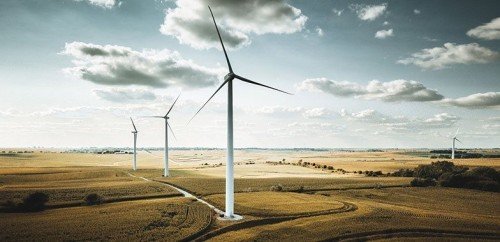
The climate challenge is absolutely monumental, but energy production might just be the key to unlocking a viable solution. Burning fossil fuels such as coal, oil and gas still remain by far the biggest contributor of global greenhouse emissions - an alarming 75% or close to 90% in terms of carbon dioxide alone. To combat this issue on a meaningful scale drastic changes need to be made when it comes to our current forms of energy generation.
We're running out of time to make a big difference in climate change - if we don't reduce emissions by almost half within the next decade, its effects will become far more severe. The answer is waiting for us all around! Renewable energy sources are an orderly solution that can power our lives without releasing pollutants or greenhouse gases into the atmosphere. It's up to us now; these resources exist everywhere and offer endless clean possibilities from which to draw on: sun, wind, water, waste and heat generated directly from Earth itself could be enough free fuel for mankind well beyond 2050.
Fossil fuels still account for more than 80 percent of global energy production, but cleaner sources of energy are gaining ground. About 29 percent of electricity currently comes from renewable sources.
Here are five reasons why accelerating the transition to clean energy is the pathway to a healthy, livable planet today and for generations to come.
1. Renewable energy sources are all around us
Of the 7.8 billion people in the world, 6 billion of them reside in countries that are dependent on importing fossil fuels for their energy needs - a source not only subject to geopolitical fluctuations but also one with finite resources and declining availability. Fortunately, renewable energies offer an alternative; sources abundant throughout every corner of our planet unlocking new pathways of prosperity through job creation, economic growth and poverty alleviation while providing greater control over supply chains as we transition away from polluting fossil fuel consumption toward sustained clean energy use across borders everywhere. According to IRENA estimates by 2050 90% of global electricity can be generated from sustainable renewables – offering hope for a more secure future without creating further environmental degradation nor leaving anyone behind.
2. Renewable energy is cheaper
Renewable energy has become the most cost-effective power option for many nations worldwide. In the last decade, prices of solar and wind energy have dropped drastically – by a remarkable 85% and 56%, respectively – resulting in an unprecedented opportunity to combat climate change by investing heavily in low-carbon sources. Low wages countries can now equally benefit from these cheaper alternatives that are slowly becoming more available on a global scale, providing hope for long term sustainability all around.
By 2030, humanity could be powered by a whopping 65% of sustainable energy sources such as solar and wind. If this ambitious target is achieved, it would reduce global carbon emissions by 90%, significantly curbing the effects of climate change. The IEA forecasts that even though it might seem more expensive initially to switch from coal and gas-driven power systems to renewable ones due to pandemic-induced price surges in commodities - these alternative green options are becoming increasingly competitive.
3. Renewable energy is healthier
Air pollution from burning fossil fuels is a global health crisis, with far-reaching and devastating effects. The World Health Organization (WHO) estimates that over 99% of people worldwide are exposed to unsafe levels of air pollutants such as fine particulate matter and nitrogen dioxide. This alarming statistic has an equally unsettling economic cost; in 2018 alone it added up to $8 billion per day – amounting to more than 2 trillion globally due solely towards medical costs associated with these preventable environmental causes which resulted in the death of 13 million innocent lives each year.
4. Renewable energy creates jobs
Investing in renewables could create an incredible 30 million jobs by 2030, with the International Energy Agency (IEA) estimating that this shift towards a net-zero emissions future will lead to a significant increase in energy sector employment. While 5 million fossil fuel production roles might be lost during this period, 14 million new green energy positions and 16 million other clean energy related opportunities would far outnumber these losses – meaning there is great potential for economic growth through embracing renewable sources of power.
5. Renewable energy makes economic sense
About $5.9 trillion was spent on subsidizing the fossil fuel industry in 2020, including through explicit subsidies, tax breaks, and health and environmental damages that were not priced into the cost of fossil fuels.
In comparison, about $4 trillion a year needs to be invested in renewable energy until 2030 – including investments in technology and infrastructure – to allow us to reach net-zero emissions by 2050.
The upfront cost can be daunting for many countries with limited resources, and many will need financial and technical support to make the transition. But investments in renewable energy will pay off. The reduction of pollution and climate impacts alone could save the world up to $4.2 trillion per year by 2030.








